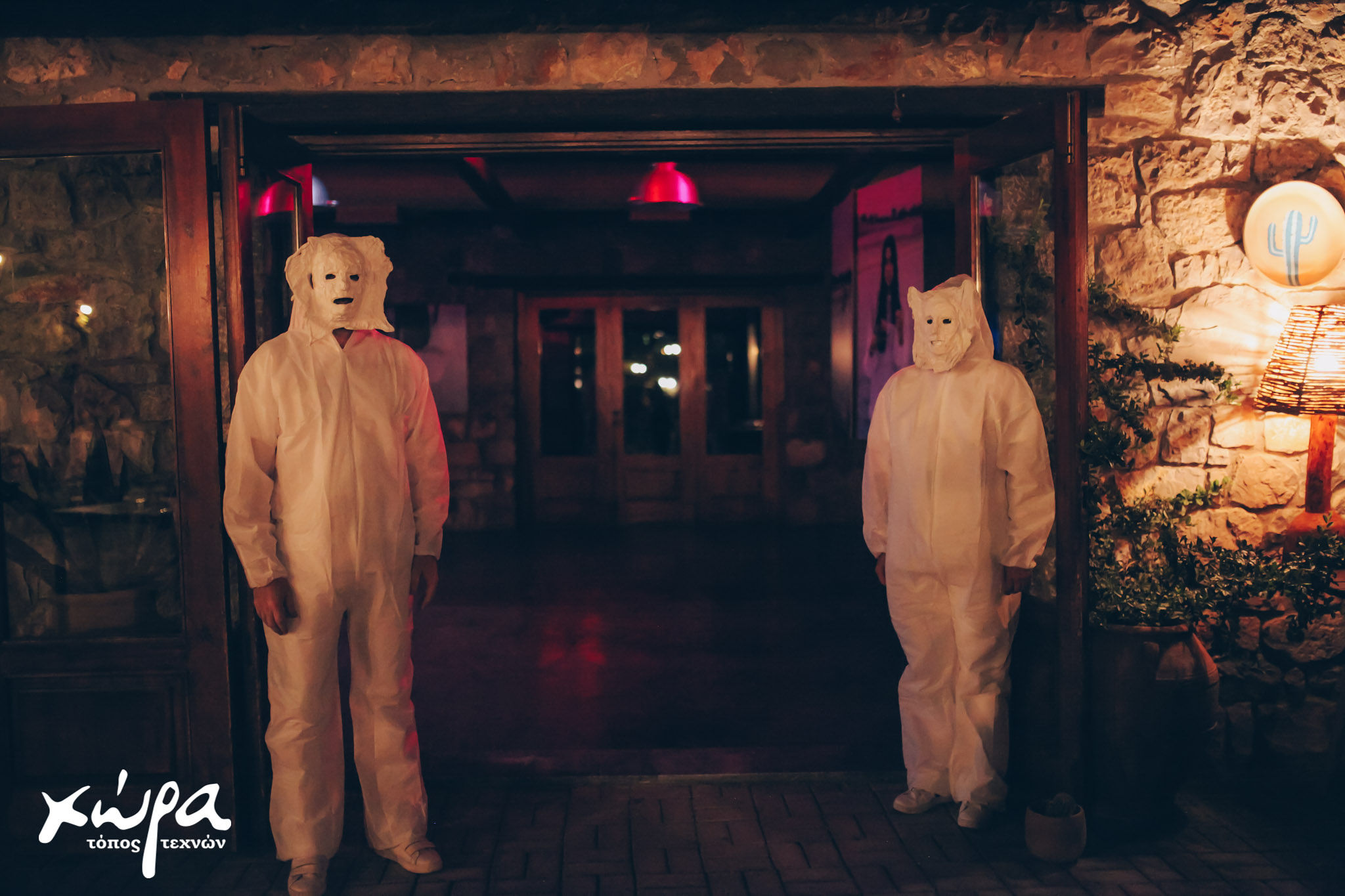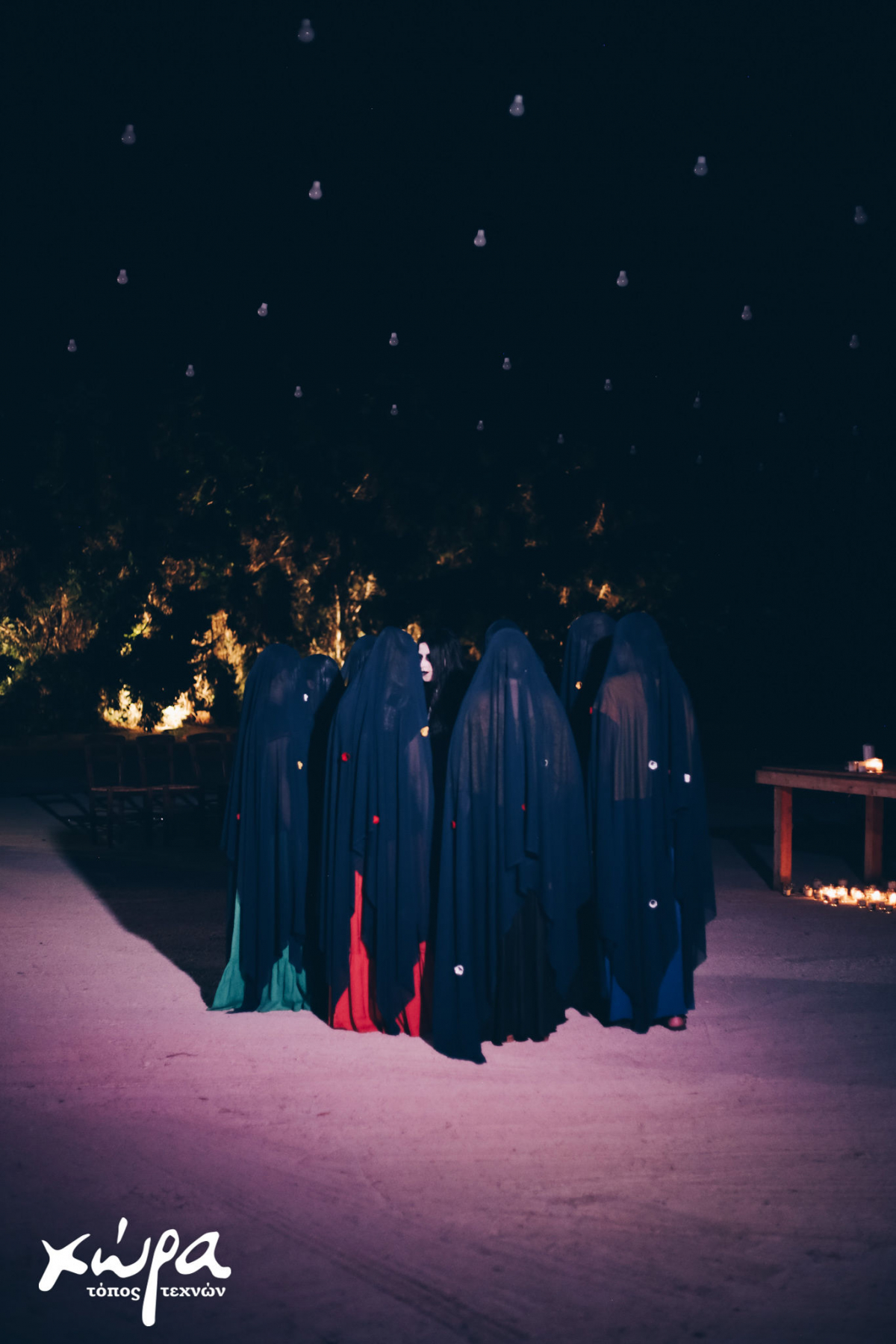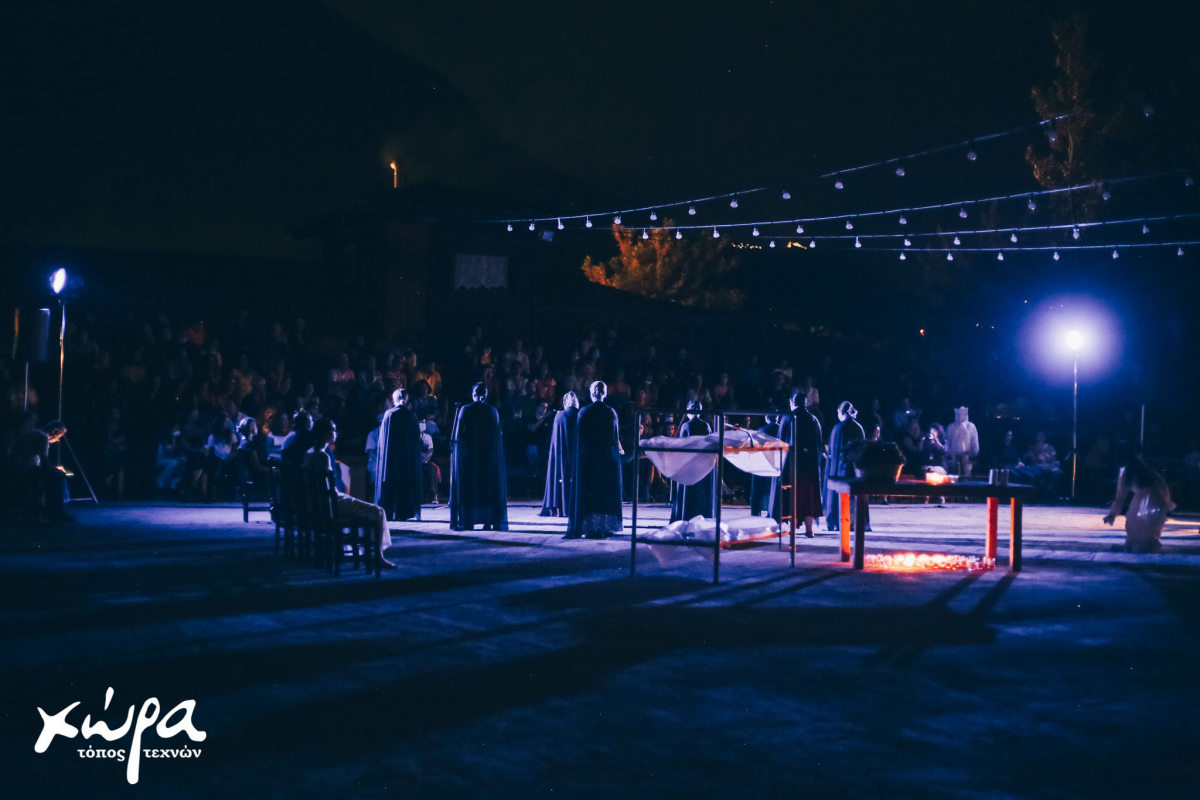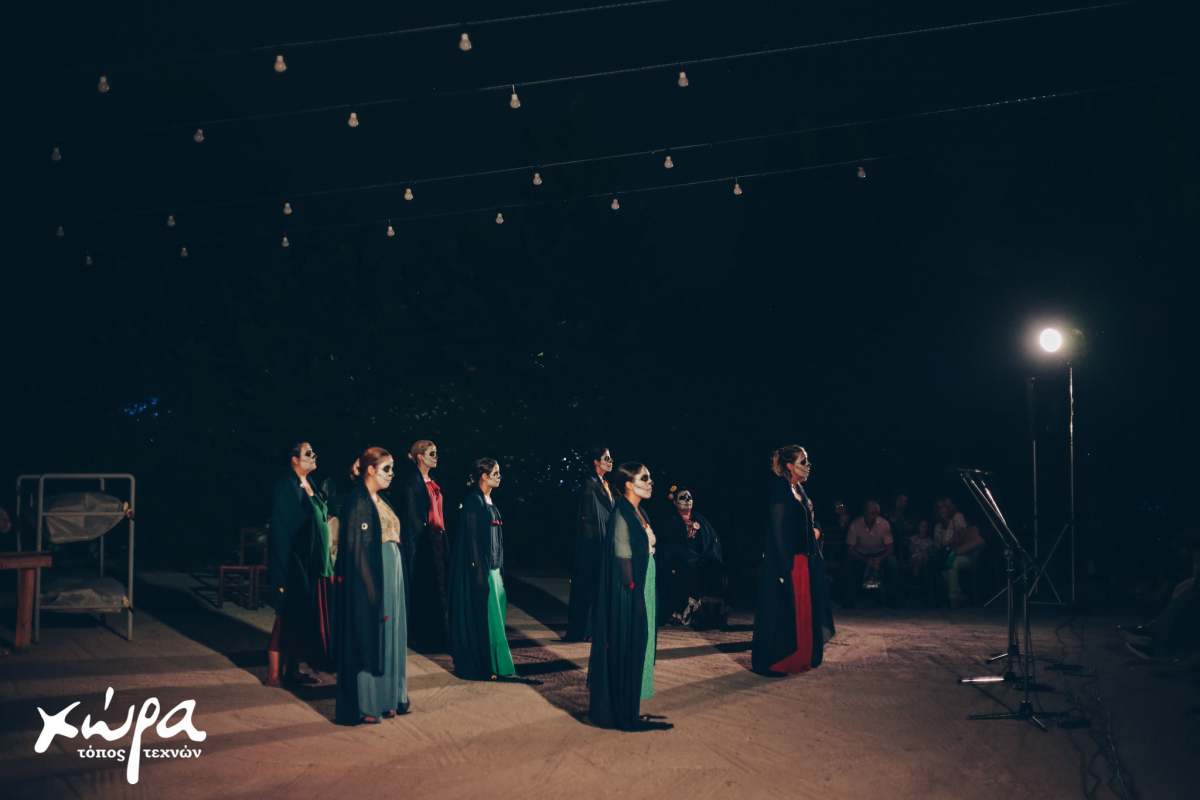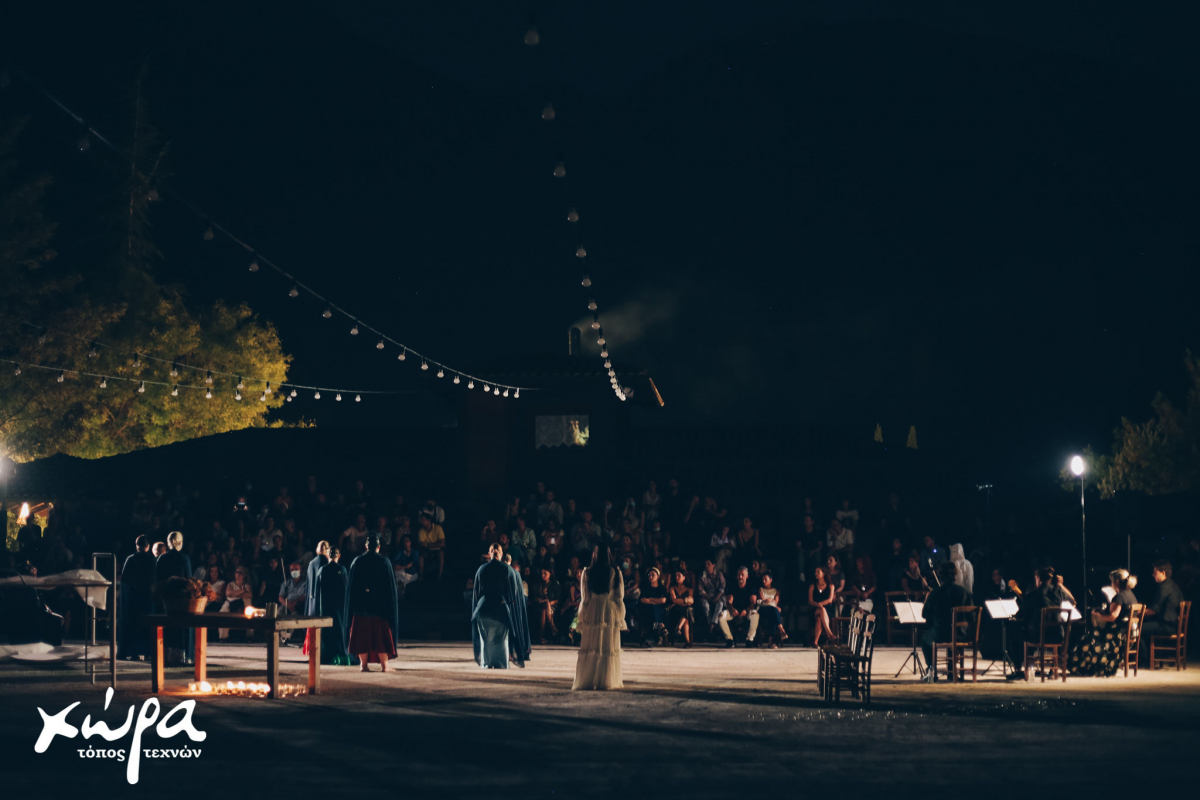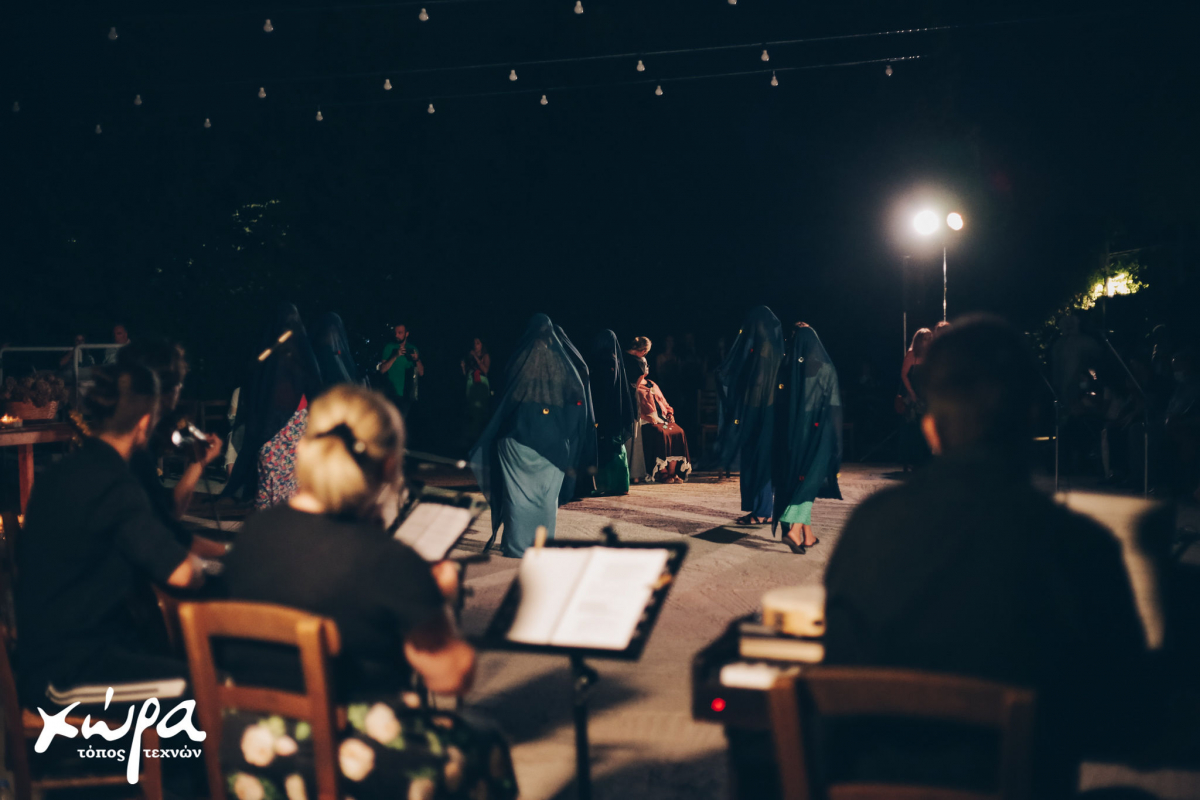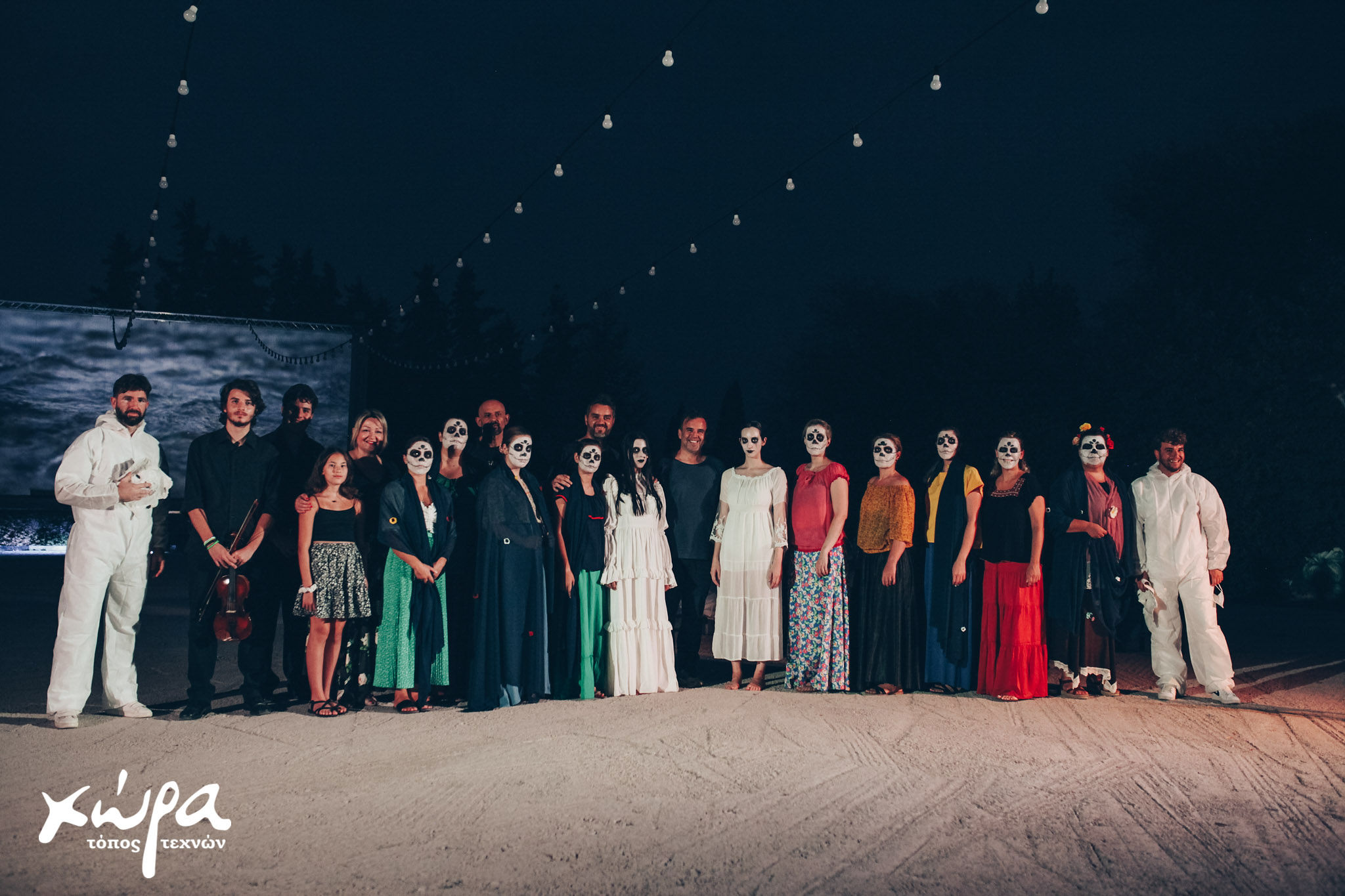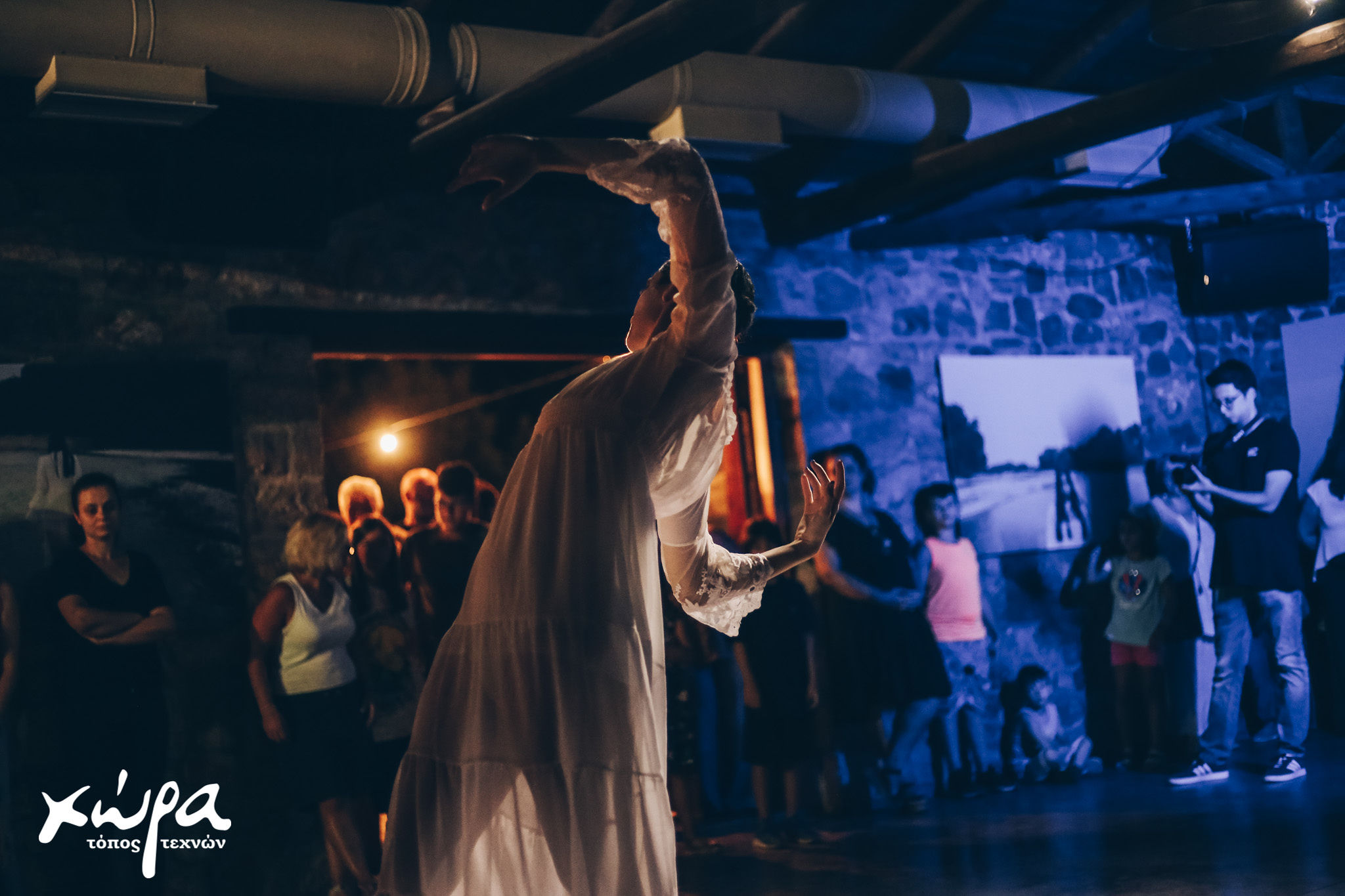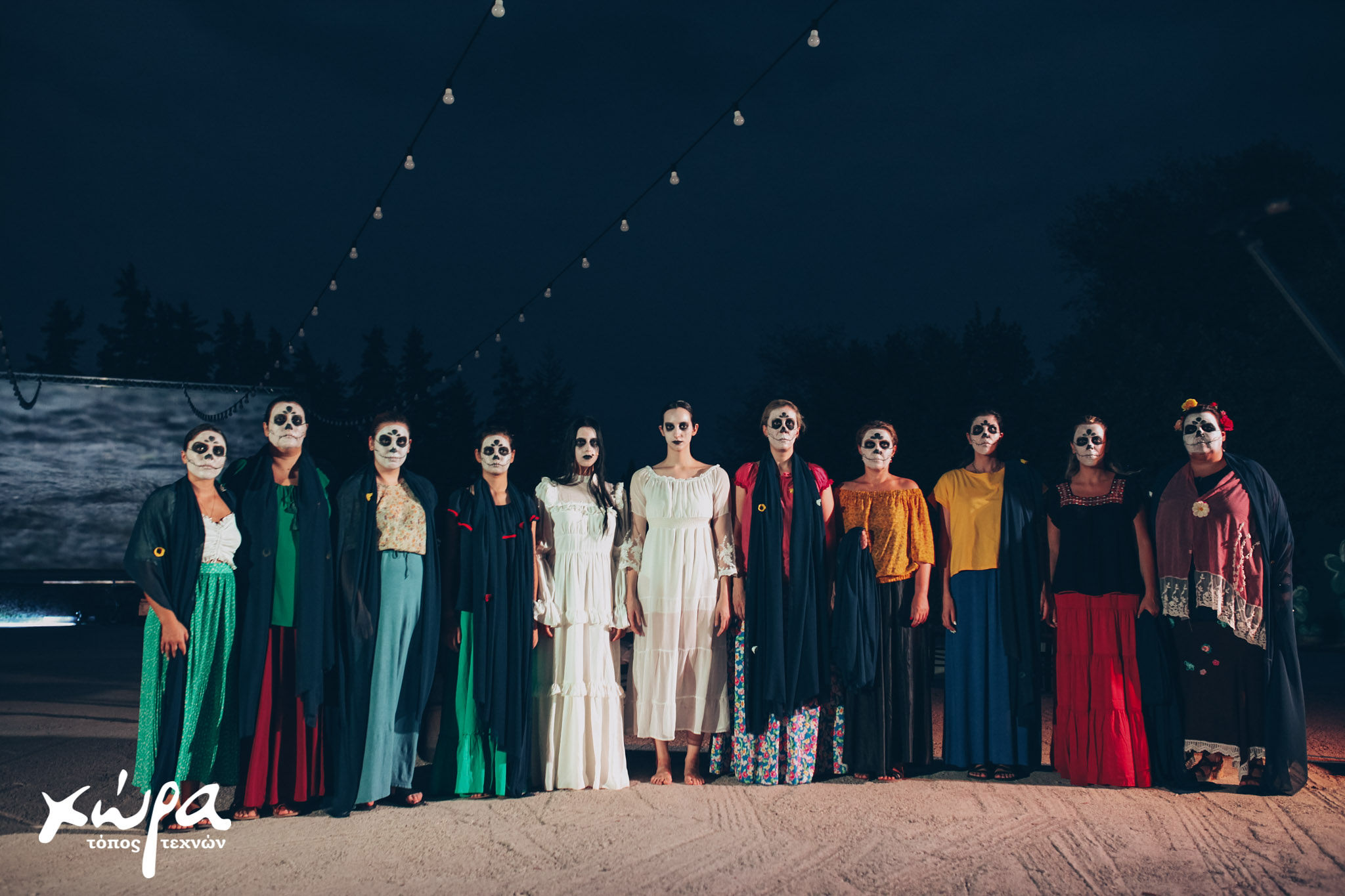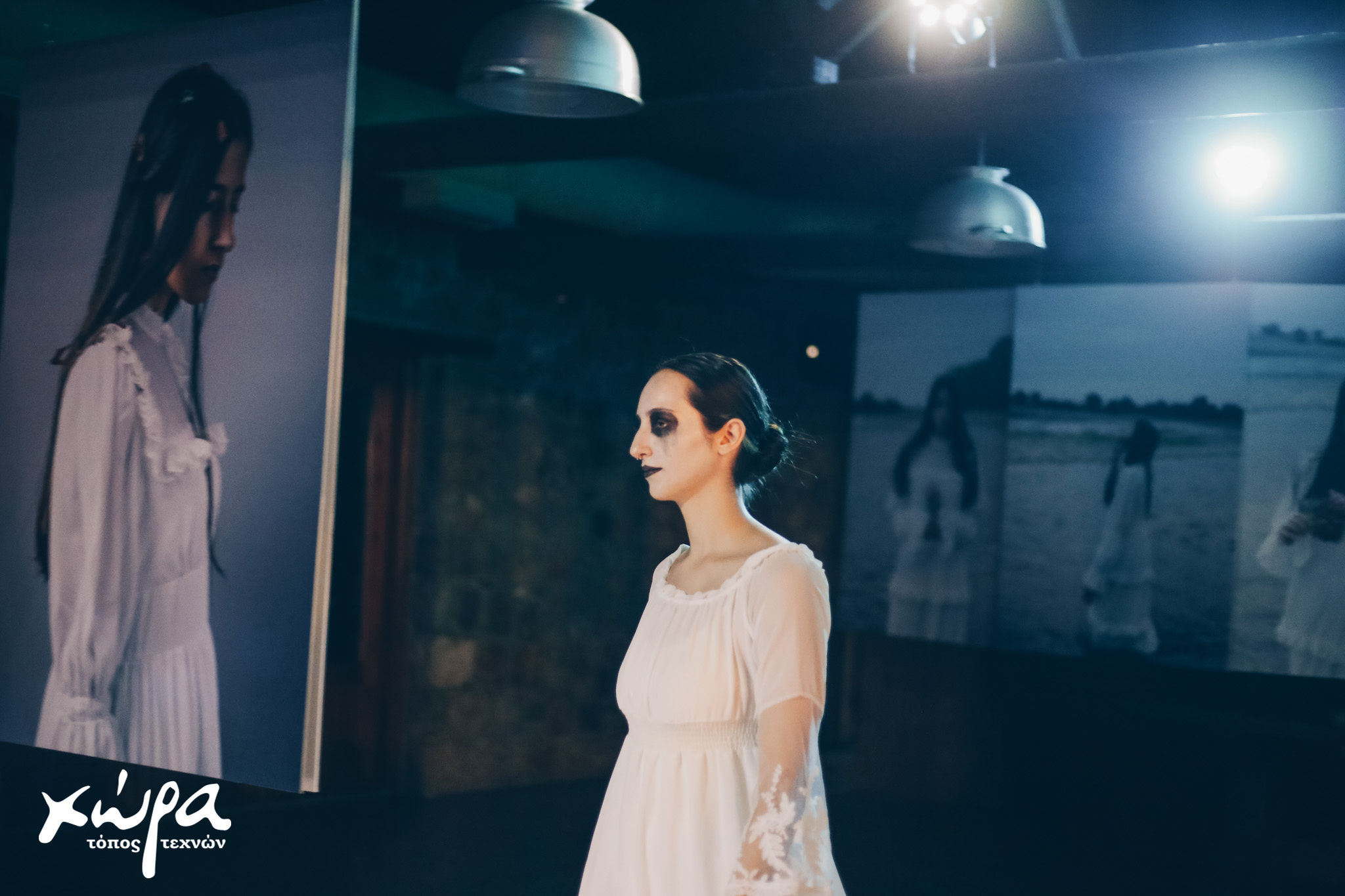On Thursday, August 19, 2021, at Topos Technon “Chora”, we experienced the performance “Llorona”.
This was the third and final part of the trilogy “Genderless Being”, following “Annabel” (2016) and “Frida” (2017).
This time, it was the Latin American legend of La Llorona that came to life through the artistry of the BelleArte Lamia collective.
According to the myth, La Llorona is a woman who, abandoned by her husband, drowns her children in the river in a moment of grief and rage, then takes her own life in the same way. For this act, she is cursed to wander the Earth eternally in search of her children. Her presence brings misfortune, and her wailing instills fear in those who hear it.
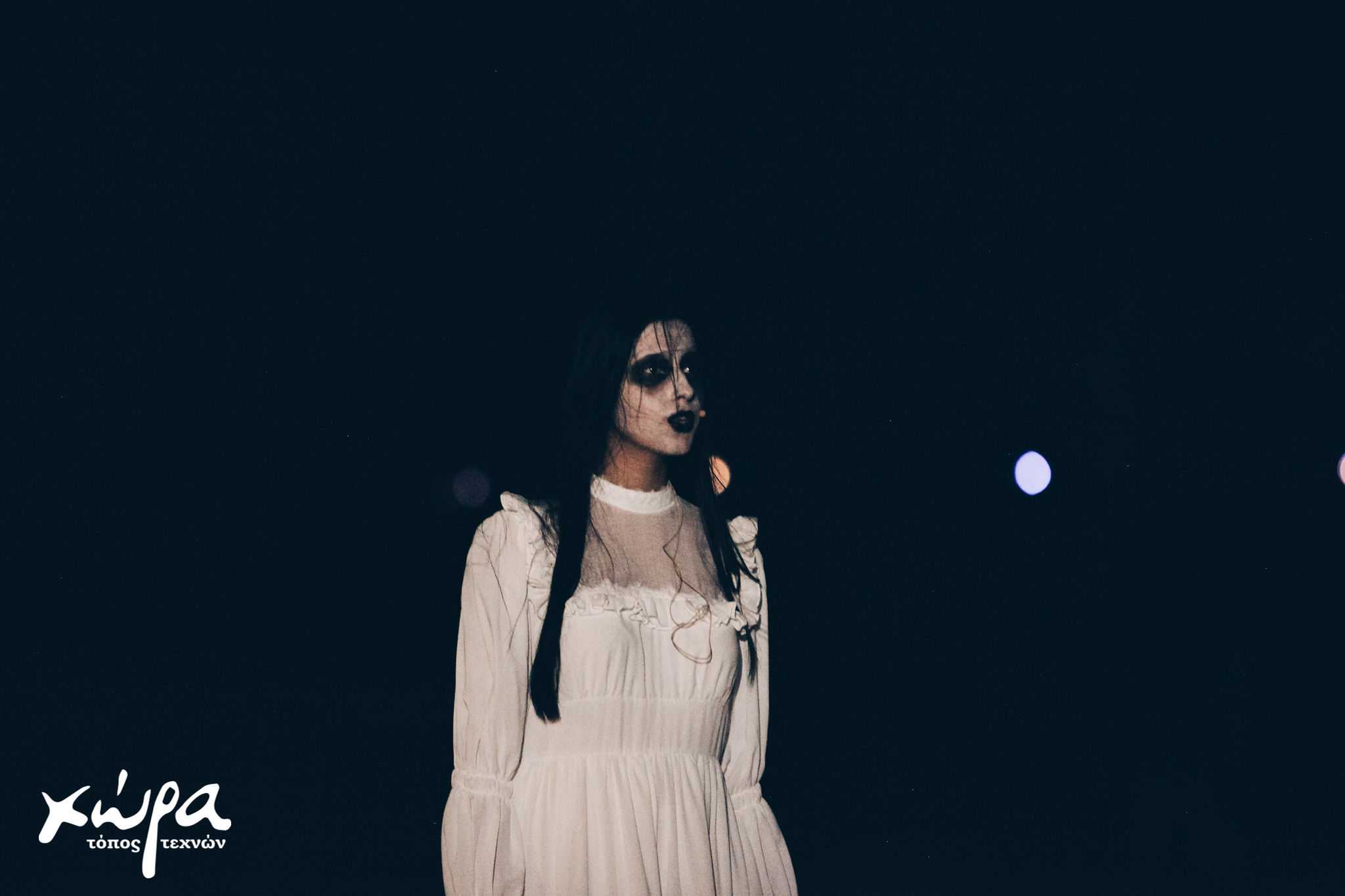
Our first glimpse of “our” Llorona came in the Stone Building of “Chora”, where among the striking, atmospheric photographs by Akis Loukas—inspired by the Llorona legend—we encountered an ethereal figure. Through her expressive dance and the movement of her body, she offered her own interpretation of the myth in a stunning choreography. Simultaneously, a screen displayed the exceptional, narrative-rich video art of Anna Vasof, blending the metaphysical with the tangible.
Then came the “Angels”—a recurring element and narrative thread throughout the entire trilogy—who guided the audience through a symbolic journey. This path represented not only the natural landscape in which the myth unfolds, but also the hardships of Llorona’s mortal existence.
The journey led to the theatrical and musical performance, where in dim lighting and within a stage design referencing the entire “Genderless Being” trilogy, the Chorus of Women emerged. Softly whispering a hypnotic lullaby, they created a spellbinding atmosphere. Through evocative lighting, movement, and storytelling, we were drawn deeply into the essence of the myth.
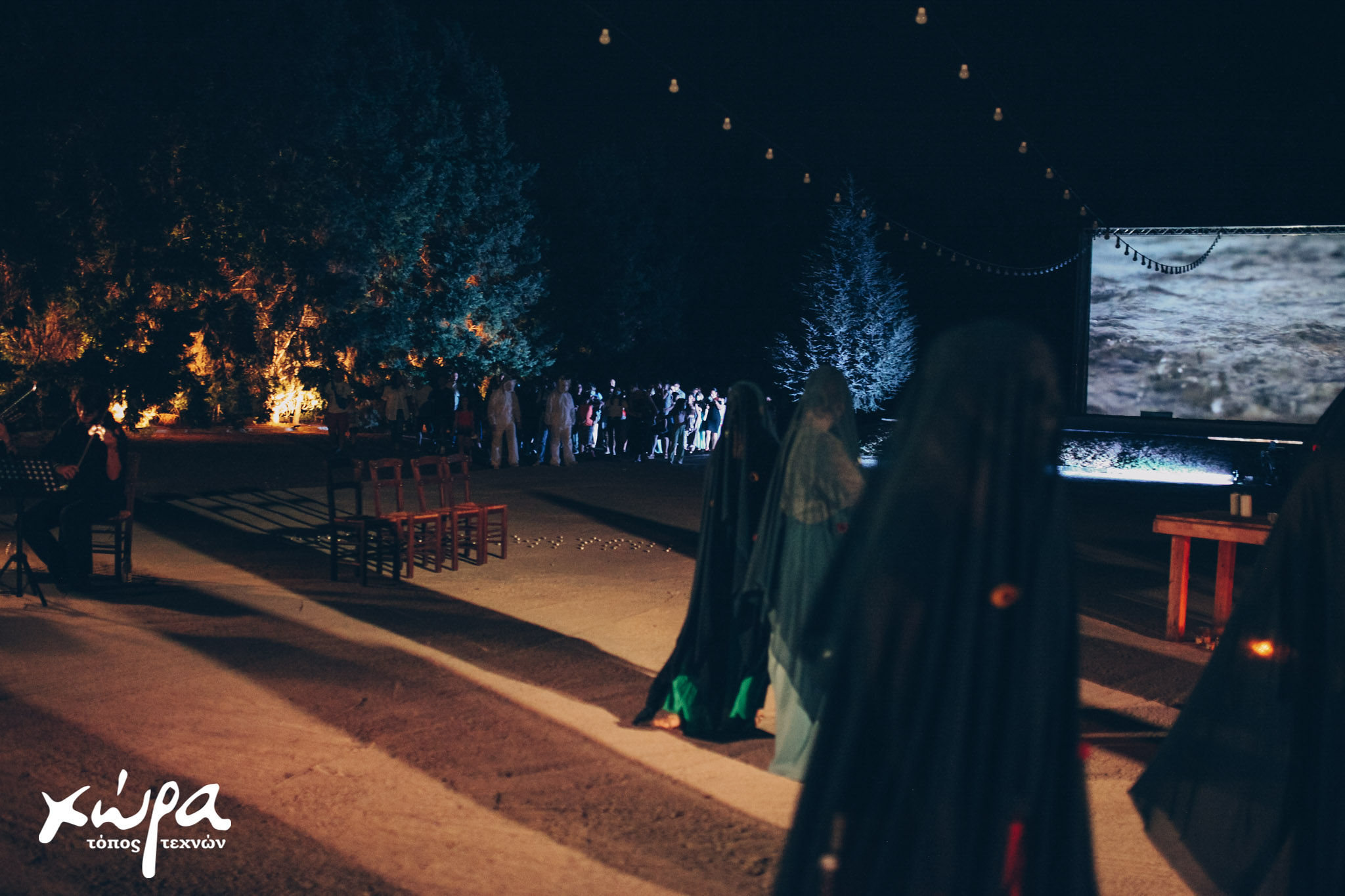
Shortly after the Chorus began, a white-clad figure with long, flowing hair approached. Through her exquisite voice and deeply emotional interpretation of her songs, we felt the pain, rage, and sorrow of Llorona. The musicians, on stage, not only performed beautifully but also accompanied the storytelling, while in the corner of the stage, we watched a simple woman “transform” into Llorona with the help of theatrical makeup. This same ghostly makeup was used across all performers, bridging the gap between the physical world and the realm of spirits.
The performance closed with a haunting rendition of the song “Llorona”, both live on stage and through video projection. The “Genderless Being” trilogy concluded to the sound of enthusiastic and heartfelt applause.
